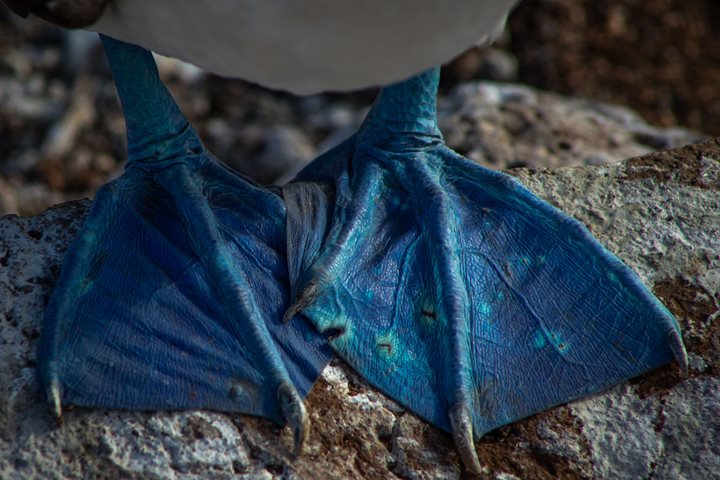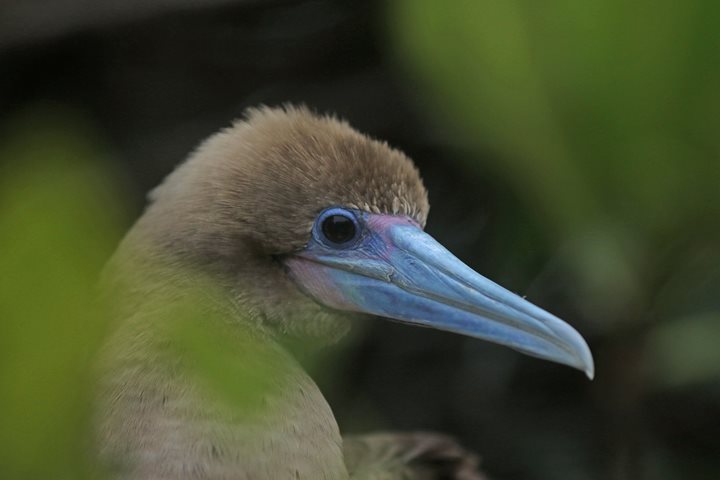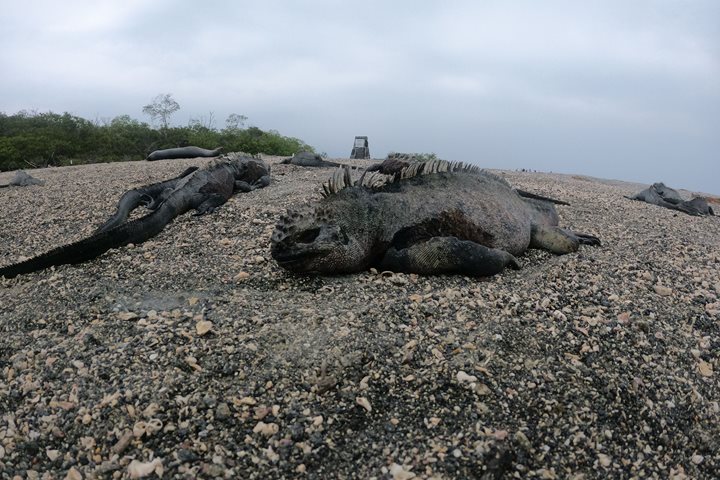Punta Pitt is the easternmost point on San Cristobal Island, making it the easternmost point of all Galapagos. It is also the oldest island in the archipelago, making the eastern point possibly the oldest terrain of all Galapagos.
As the National Geographic Islander pulled into her anchorage, the early light from the east accentuated the ravines and eroded edges where eons of weather – only occasionally rain – have torn apart this tuff cone until only a fragment is left. But the scale is still beyond the human norm, so it took us a while to clamber up a dry streambed of steep angle, 340 feet up until we reached the plateau.
Once up on a level trail we hiked out to the outer coast, battling tremendous winds (one hat was fortunately caught before it got too far)…refreshing! Out on the edge we saw red-footed boobies, blue-footed boobies, Nazca boobies, magnificent and great frigate birds, Chatham mockingbirds, Chatham lava lizards, and even the unique marine iguana from this outpost on a remote island (pta. Pitt marine iguanas are special within the specialness of Galapagos marine iguanas).
Once back on the sparkling green and beige beach, many folks chose to swim, relax, and photograph for the remainder of our free time before returning to the ship.
The afternoon is difficult to explain well. Once again we went on shore to walk a beach – but this time it was the texture of flour and bright white. Cerro Brujo is one of the few areas that the National Park Service allows visitors to roam on their own. After a week on board, everyone was familiar and respectful of regulations and respectful of Galapagos inhabitant’s personal space. So our last two hours before the sun went down was spent in the presence of Galapagos sea lions under equatorial sun, with the Pacific breeze in our faces and blue-footed boobies diving into the shallows.







